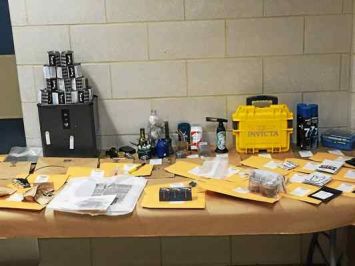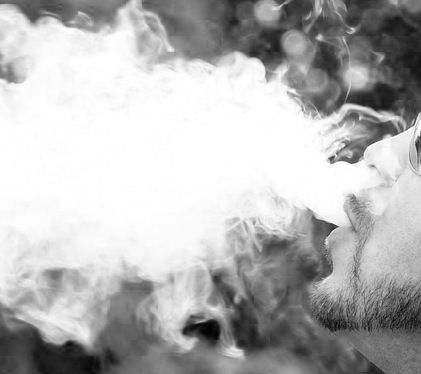Drug use on college campuses has been on the rise. Cabrini University is no exception as two resident sophomores were arrested in August. Monitoring the Future reported that marijuana is used at a higher rate on college campuses than at any time in the past 35 years. The percentage of students who report having recently used marijuana has increased eight percent between 2006 and 2015 while use of other illicit drugs has since decreased.
Peer pressure and a desire to fit in are often attributed as the main reasons college students abuse drugs. College students begin using drugs as a method to cope with stress and relax. Additionally, drug use is frequently a result of not being well enough equipped to deal with their newfound freedom.
Attending a college or university is the first time many students are away from home and without parental control. This gives new students an independence and autonomy to explore their individuality. While for some students, this freedom just means eating pizza for dinner every night and binge-watching Netflix until 3 a.m., for those who are ill-prepared to handle that independence and self-responsibility, this freedom commonly results in experimentation with drugs.
Underage drinking and illegal drug use is extremely common across college campuses in America. 5.4 million college students have admitted to drinking or using drugs at least once monthly. According to the National Council on Alcoholism and Drug Dependence, nearly 80 percent of college students drink alcohol regularly. Half of college students who do drink usually consume alcohol through binging, or drinking more than five beverages consecutively.
As for drug use, Addiction Resource reported that 3.8 million, half of all full-time students, abuse drugs. Drug abuse among adolescents is more prevalent on college campuses. A combination of survey results showed that college students abuse drugs noticeably more than those in the same age range who are not attending college. Illicit drug use has gradually increased six percent since 2006.
Of drugs, marijuana and variations of marijuana are the most commonly used among students on college campuses. Daily marijuana use among college students reached an all-time high of 4.6 percent in 2015. Due to the gradual but nevertheless progressing legalization process of marijuana, it has become the most popular drug of choice for university students.

On Monday, Aug. 28, two unidentified Cabrini sophomores were arrested for drug possession. Ahkira Massenburg, assistant director of Resident Life, and Deputy Police Superintendent Andrew Block of the Radnor Township Police Department both declined to comment on the situation while the investigation is still underway.
One student was charged with possession with intent to distribute as well as possession of drug paraphernalia while the other was charged with possessing a small amount of marijuana and also drug paraphernalia. The students were in possession of hashish oil.
Hashish oil is a wax-like substance with concentrated THC and CBD, the primarily components of marijuana, made from cannabis. As pure hashish does not burn when rolled in a joint, hashish is typically consumed in a pipe, bong or vaporizer after being mixed with herbal cannabis.
As of December of last year, the Drug Enforcement Agency has classified Marijuana extract as a Schedule I drug. Schedule I drugs are substances that either have a high potential for abuse, that have not currently been accepted for medical use in treatment in the United States or that have a a lack of accepted safety for using the drug under medical supervision.
The legal consequences of possession with intent to distribute hashish oil can range from a $250,000 fine with up to five years in prison to an up to $50 million fine with a sentence of 10 years to life, according to the Congressional Research Service. The extent to which the students will be sentenced depends on how many grams the students possessed.
Although the police have yet to release exactly how much hashish oil was in the students’ possession, it is known that the students had in their possession the largest amount of hash oil seized in Radnor township and that some the drugs were on wax paper, one ranking up to 140 grams.
Based on Cabrini’s alcohol and drug policy, in addition to potential jail time, the students arrested for possession may potentially face a fine, forced participation in a drug education program, residence hall access restriction, housing suspension and class suspension from Cabrini. That is if they can and do return to campus.
Not all student drug users will be subject to investigation and prosecution, but there are other consequences to drug use.
Susan Fitzgerald, director of health services at Cabrini, said there are a variety of different health consequences depending on what drugs are used; however, marijuana and marijuana extract has not formally connected to any serious health risks.
“They do a lot of studies,” Fitzgerald said. “And they haven’t been able to identify any specific health risks with short term use.”
The academic consequences of drug use in students includes missing classes, falling behind on assignments, doing poorly on exams and receiving overall lower grades.
Erin Gabriele, assistant director for employer relations in the Center for Career and Professional Development, said students need to understand that the consequences of drug use extend to more than their college careers. Many employers conduct drug tests and when students are caught on campus or somewhere else, those misdemeanors and felonies will come back to hurt them.
“This isn’t just going to impact their college education,” Gabriele said. “It will impact their life beyond that.”



